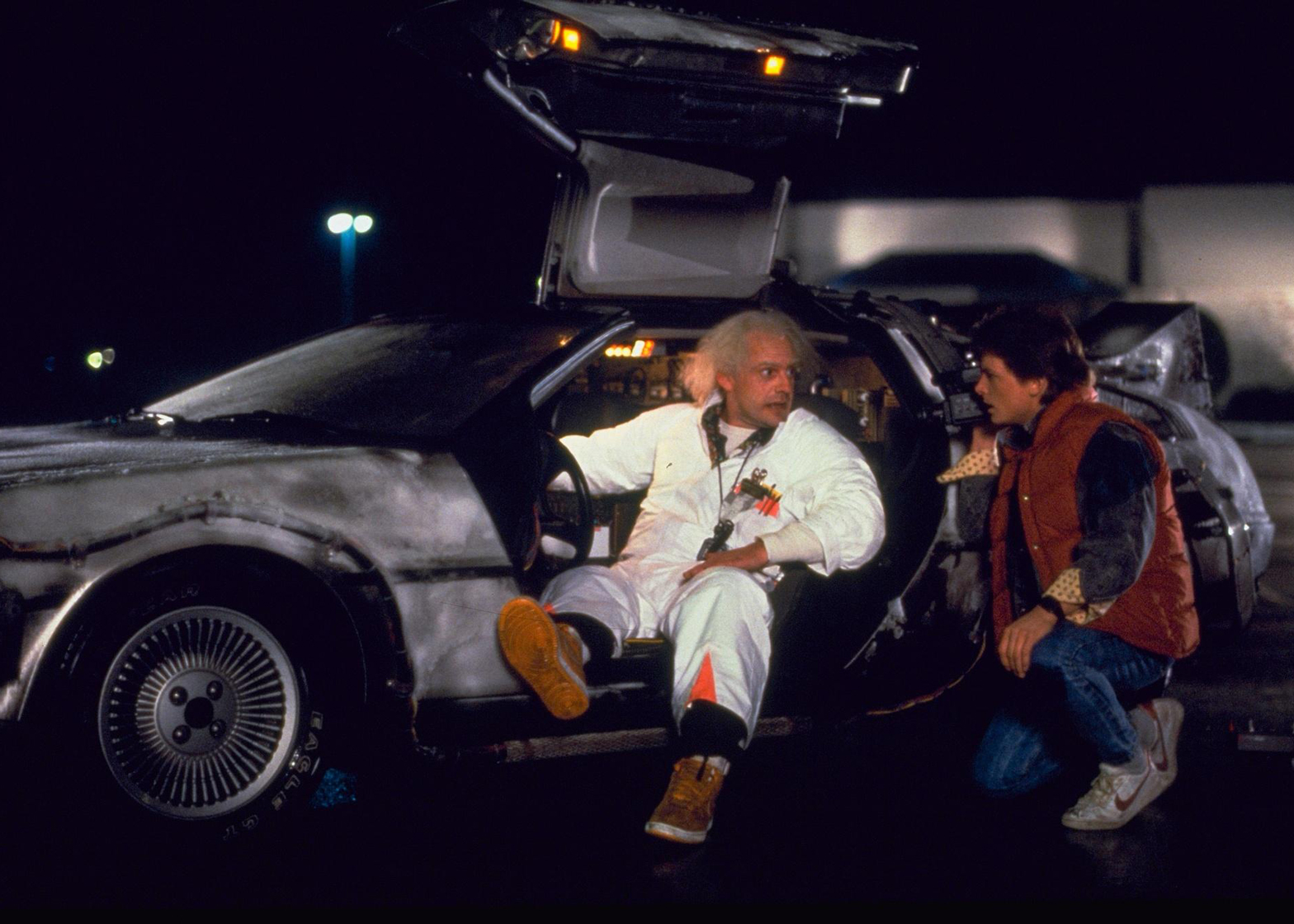Car manufacturers, including Mercedes-Benz and Toyota, suggest the classic sci-fi film Back to the Future provided the inspiration for the vehicles of tomorrow.
German manufacturer Mercedes-Benz has posted a movie of its F 015 Luxury in Motion concept car – a pod-like driverless living room on wheels – appearing as if from nowhere on a darkened street illuminated only by low-level lighting and flaming tire tracks.
The scene references the arrival of the now-iconic DeLorean - the car that is turned into a Time Machine by the Doc Brown inventor character in Back to the Future.
"Thanks for inspiring our engineers, Doc," said text overlaid on the movie. "Arrived in the future; our vision of autonomous driving."
The DMC-12, commonly known as the DeLorean since only one model was ever built by the financially doomed manufacturer, was dreamt up by prolific car designer Giorgetto Giugiaro.
Its design, featuring gull-wing doors and a fibreglass chassis, to which non-structural stainless steel panels were affixed, became an iconic symbol of futuristic car design after its inclusion in the hit Back to the Future films.
The car's doors are replicated in the latest vehicle launched by Tesla, the electric car manufacturer launched by billionaire entrepreneur Elon Musk.
The connection between the Model X, which debuted in September, and the DeLorean were made explicit when the two cars were displayed side by side during Stanford University's Future Fest event earlier this month, where Musk was the headline speaker.
Tesla has also worked with design agency Positron to create a virtual reality "experience" that races its Model S car against the DeLorean.
"The DeLorean comes from the past to our present to find that the car of the future is a Tesla," Positron founder Jeffrey Travis told FastCo.
Tesla has been at the forefront of electric car development since it was founded in 2003, and has made its patents publicly available to encourage wider adoption of the technology. Numerous manufacturers, including technology companies such as Google and reportedly Apple, are now working on electric car designs.
Meanwhile, Japanese manufacturer Toyota released a movie today featuring Back to the Future actors Christopher Lloyd and Michael J Fox discussing what the film got right and wrong in its future-looking predictions.
The movie also focuses on Toyota's Mirai vehicle – an emission-free hydrogen fuel-cell car unveiled last year.
"Watch the future become reality as the two Back to the Future icons see trash get turned into fuel for a car," said Toyota – a reference to the domestic reactor that generates power from household rubbish and is used to power the DeLorean time machine in Back to the Future II.
Mirai means "the future" in Japanese, and the car is being advertised with the slogan "powered by everything". It generates its own electricity using hydrogen, which is stored in carbon-fibre fuel tanks.
As air flows through the front grilles and into the fuel stack, it reacts with the hydrogen in a chemical reaction that provides the car's power. The by-product from this process is water, which exits through the exhaust pipe at the vehicle's rear.
The hydrogen is produced through a process that involves harvesting and converting gases from decomposed waste, collected from landfill sites.
"In Back to the Future, the Mr Fusion converted household waste to power the time machine's flux capacitor and time circuits," said Toyota. "We don't need Mr Fusion, we have a fuel cell stack."
Recycling and renewable energy company GENeco have already released vehicles powered by waste. A prototype Volkswagen Beatle, called the Bio-Bug, was unveiled in 2010 and was powered exclusively on methane produced from human poo gathered at sewage works. The technology was more recently scaled up to power a 41 seater bus.
Other car technologies shown in the original movie include flying cars. A version – the AeroMobil 2.5 – was successfully tested on roads and in flight in 2013.
Its designers claimed that the vehicle would be the "ideal solution" for mid-range journeys and could ease congestion in the world's busiest cities, but is a long way form becoming commercially viable.
"It's not surprising flying cars haven't taken off," Matt Cooper-Wright, project lead and interaction designer at innovation and design consultancy IDEO, told Dezeen. "It's more surprising that people are still hanging onto it, like this is something we should have."
Earlier this year, Benoit Jacob, head of future design at German car manufacturer BMW, told Dezeen that new fuel technologies were already radically transforming car design on the ground.
"What is interesting in the development of a hybrid car is that the constraints have been slightly changed from those of a conventional vehicle," said Jacob. "The way you build a hybrid is different. It drastically alters the proportions, which directly impacts on the design. We saw that as an opportunity to move car design forward."
BMW has also teamed up with Toyota to develop a hydrogen fuel cell. Its currently available i8 – a plug-in hybrid powered by an electric motor in conjunction with a petrol engine that was named as one of the 2015 Designs of the Year – was recently tested using the emission-free technology, and will reportedly be rolled out to production vehicles by 2020.

